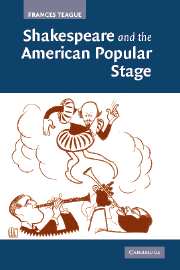 • “John Marin: Ten Masterworks in Watercolor” goes up next Thursday at Meredith Ward Fine Art and will be on display through Dec. 20. The show consists of ten works on paper by the pioneering American modernist whose virtuosity in the watercolor medium remains unrivaled. Some are from Marin’s estate, others from private collections, and most are familiar only to Marin specialists. It’s been a number of years since any of Marin’s watercolors were last on view in Manhattan, making this a rare opportunity to experience a great American painter at the peak of his powers.
• “John Marin: Ten Masterworks in Watercolor” goes up next Thursday at Meredith Ward Fine Art and will be on display through Dec. 20. The show consists of ten works on paper by the pioneering American modernist whose virtuosity in the watercolor medium remains unrivaled. Some are from Marin’s estate, others from private collections, and most are familiar only to Marin specialists. It’s been a number of years since any of Marin’s watercolors were last on view in Manhattan, making this a rare opportunity to experience a great American painter at the peak of his powers.
For more information, go here.
• The Maria Schneider Orchestra, to which regular readers of this blog need no introduction, will be performing Nov. 25-30 (except for Thanksgiving) at the Jazz Standard. It’s become a tradition of sorts for Maria and her big band to set up shop at the Jazz Standard during Thanksgiving week. Alas, they don’t appear nearly often enough in the New York area, so tables are likely to be snapped up fast. Don’t delay–reserve today.
For more information, go here and scroll down.
• Speaking of my favorite New York nightclub, Roger Kellaway’s Live at the Jazz Standard, a two-CD set from IPO Recordings, was released today. I wrote the liner notes, which are based on a posting that I knocked out immediately after coming home from the opening night of the 2006 engagement at which this album was recorded:
Kellaway is currently fronting a piano-guitar-bass trio, which he claims to be the fulfillment of a “childhood dream.” Oscar Peterson led just such a group in the Fifties, and Kellaway, a lifelong Peterson fan who has always enjoyed playing without a drummer, knows how to make the most of the elbow room afforded by that wonderfully flexible instrumentation. Russell Malone is the guitarist, Jay Leonhart the bassist. The three men opened the set with a super-sly version of Benny Golson’s “Killer Joe,” and within four bars you knew they were going to swing really, really hard. So they did, with Kellaway pitching his patented curve balls all night long, including a bitonal arrangement of Bobby Darin’s “Splish Splash” and what surely must have been the first time that the Sons of the Pioneers’ “Tumbling Tumbleweeds” has ever been performed by a jazz group.
Everybody in the band (including vibraphonist Stefon Harris, who joined the trio for “Cotton Tail,” “You Don’t Know What Love Is” and “52nd Street Theme”) was smoking. Kellaway, though, was…well, I really don’t have words to describe the proliferating creativity and rhythmic force of his piano playing. Sarah did pretty well, though: “Did you see my jaw drop?” she asked me when it was all over. Russell Malone, with whom I chatted between sets, put it even more tersely. “That man is scary,” he said, shaking his head.
Yes, it was that good and then some, and then some more–and now you can hear what you missed.

 So far as I know, Armstrong first achieved that distinction in 1939, the year that he played Bottom on Broadway in Swingin’ the Dream, a swing-era musical version of A Midsummer Night’s Dream that closed after just thirteen performances. Hirschfeld drew him for the New York Times that season. The failure of Swingin’ the Dream put an end to his brief stage career, but not to his popularity, and from then on he would figure prominently in Hirschfeld’s gallery of celebrities.
So far as I know, Armstrong first achieved that distinction in 1939, the year that he played Bottom on Broadway in Swingin’ the Dream, a swing-era musical version of A Midsummer Night’s Dream that closed after just thirteen performances. Hirschfeld drew him for the New York Times that season. The failure of Swingin’ the Dream put an end to his brief stage career, but not to his popularity, and from then on he would figure prominently in Hirschfeld’s gallery of celebrities. “Black Watch”‘s portrayal of modern war is aestheticized and prettified almost beyond recognition. Much of the show consists of a series of tableau-like montages whose elaborate choreography is meant to juxtapose the regiment’s ceremonial duties with the bloody realities of war. Yet those realities are carefully kept at arm’s length, just as the composite personalities of the soldiers seen in “Black Watch” are never allowed to emerge save in flashes.
“Black Watch”‘s portrayal of modern war is aestheticized and prettified almost beyond recognition. Much of the show consists of a series of tableau-like montages whose elaborate choreography is meant to juxtapose the regiment’s ceremonial duties with the bloody realities of war. Yet those realities are carefully kept at arm’s length, just as the composite personalities of the soldiers seen in “Black Watch” are never allowed to emerge save in flashes.